Cannabis sativa thrives in the equatorial regions of planet earth, and it is accustomed to high humidity and high heat. Cannabis indica originated in the mountains of the Middle East, and are adapted to cooler, more arid climates.
Cannabis is more difficult to cultivate in a cold climate, but it’s a very hardy plant – it is called a “weed,” after all. Even if you live far north or south of the equator, you should be able to grow cannabis by carefully timing your grow or simply growing indoors.
Read on for all you’ll need to know to grow your own cannabis in cold climates!
Cold Weather Challenges
Cannabis likes to stay between 20-30°C (68-80°F).
There’s a bit of wiggle room – brief peaks or dips outside of this range may not kill your plant – but straying outside this temperature range will impede the plant’s growth, and drops below around 12°C (55°F) may cause it to wilt.
Depending on the strain, low temperatures may also cause the plant to become hermaphroditic, which will dramatically decrease the plant’s yield.
Moisture is more likely to be a problem in cold weather. Warm air can support more moisture than cold air. When the temperature drops, the air can’t hold the moisture, and you get condensation.
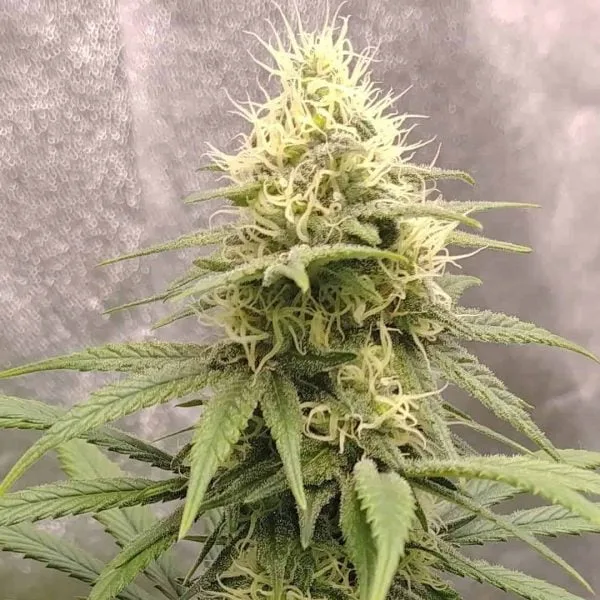
That condensation may collect on your buds, which has the potential to cause mold problems or rot.
Choosing the Right Strain for Outdoor Growing
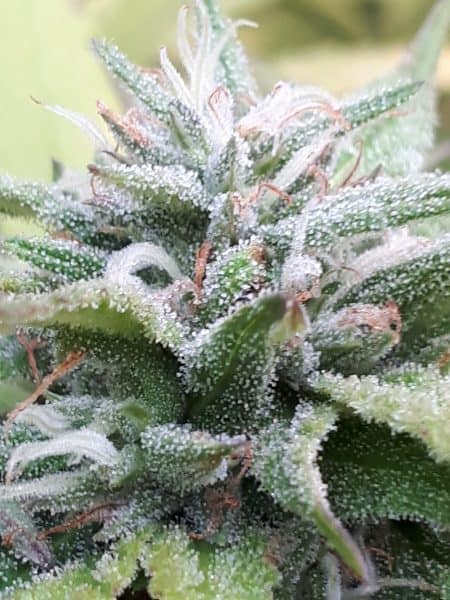
If you live in a cold climate, starting out with the right strain is one of the most important keys to ending up with a healthy yield at harvest time, especially if you are growing outdoors.
In general, Indicas are a better bet than Sativas since they originated in cooler regions.
If you have a short growing season, autoflowering strains may be an even better choice.
Autoflowering strains have all been crossbred with Cannabis ruderalis, a third subspecies of cannabis native to Central and Eastern Europe.
C. ruderalis evolved to flower automatically when it reaches maturity, rather than flowering as the days grow shorter only to be killed by cold and frost.
C. ruderalis doesn’t normally contain much THC, but thanks to breeders crossing it with other strains, we now have autoflowering strains that are the best of both worlds.
Timing
If you’re growing outdoors in a cold climate, starting at the correct time may be the most important step.
- When to plant: If you live in an area with mild springs, you can google the average date of the last Spring frost in your area, and plant your seeds just after that.
If your area has volatile spring temperatures, you may want to start your plants inside and set them outdoors a little later.
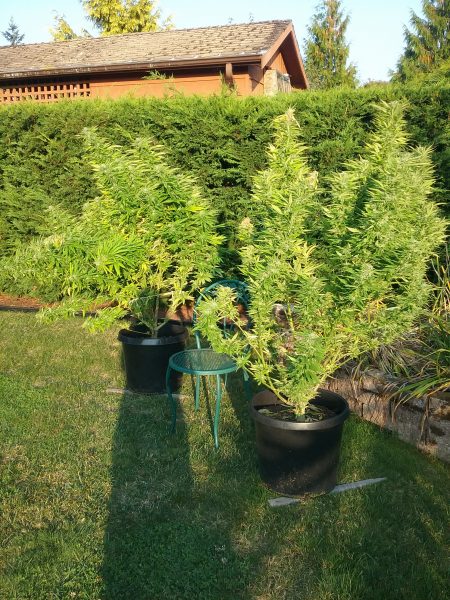
- Getting a head start: Starting your plants indoors can save them from a late frost, but it can also be a good way to functionally extend the length of your growing season. Just start your plants germinating about two weeks before you plan to put them outside, and let them acclimatize to the outdoor temperatures for a few hours a day for a few days before you leave them outside for good.
- Force-flowering. If winter is coming and you’re concerned that they won’t be ready to harvest before the cold ruins your buds, plan ahead and force-flower them by covering up your plants with something light-proof (like a tarp) to simulate a shortened night. The plant will believe the season is changing and begin flowering.
Should I plant in pots or in the ground?
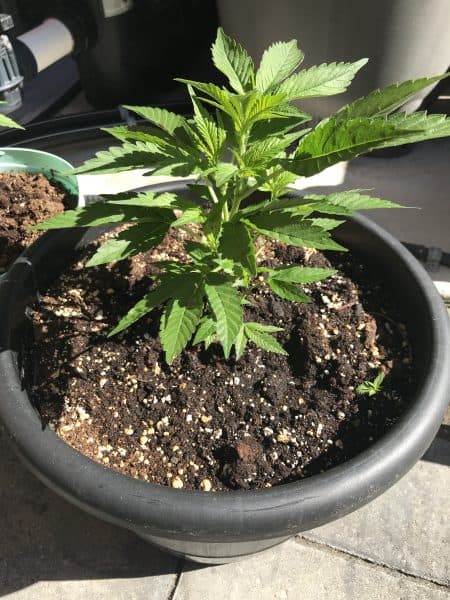
Whether you should grow in pots or the ground depends on what problems you anticipate.
If your weather is volatile or you get a lot of rain, you might want to grow in pots so that you can bring the plants inside when the weather becomes inhospitable. However, if your area is cold but dry, planting outside could be a good option since the soil will keep the roots warmer than an above-ground pot.
On the other hand, if the ground itself doesn’t keep your plant’s roots warm enough, it’s hard to warm them up compared to the ease of slipping a heating pad underneath a pot.
Warning Signs
Outdoors, you can’t control the climate like you can inside – so, it’s extra important to familiarize yourself with your plant’s warning signs. If the weather gets too cold, you may notice:
- Edges of leaves curling
- Leaves turning yellow
- Slowed or stopped growth
- Leaves and petioles may turn brown
If you notice any of these happening to your plant, you may need to try something else to keep the plant warmer, or bring it inside.
Growing Indoors
What if your climate is just too cold to grow cannabis? Or what if you’ve waited into Autumn and missed the best times to plant, but you just can’t wait to start a plant growing?
In either case, you’re going to need to grow indoors.
- Choose the right room. A well-insulated room will be much easier to heat to your plant’s liking.
Try to avoid using rooms that have multiple outside-facing walls, the room above your garage, or any room with a cold concrete floor.
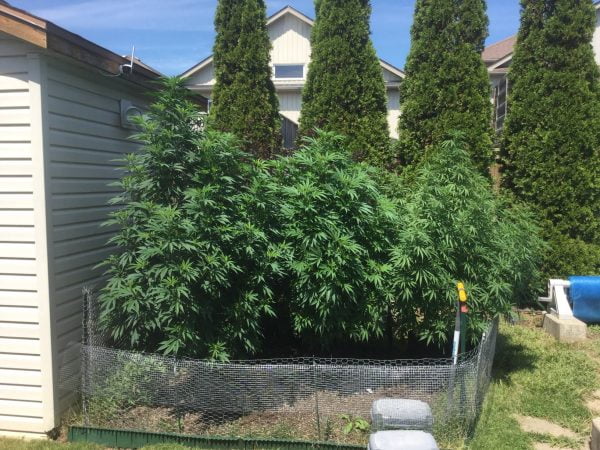
- Swap your light and dark cycles. If you want to conserve energy and keep your plants at a more stable temperature, swapping the light and dark cycle can help with both.
All this means is that you need to block out any light in your grow room, and set your lights to turn on overnight. The lights will help heat the room in the coldest hours of the day, and avoids wasting electricity during the hours where the ambient temperature is already warm enough (or at least warmer).
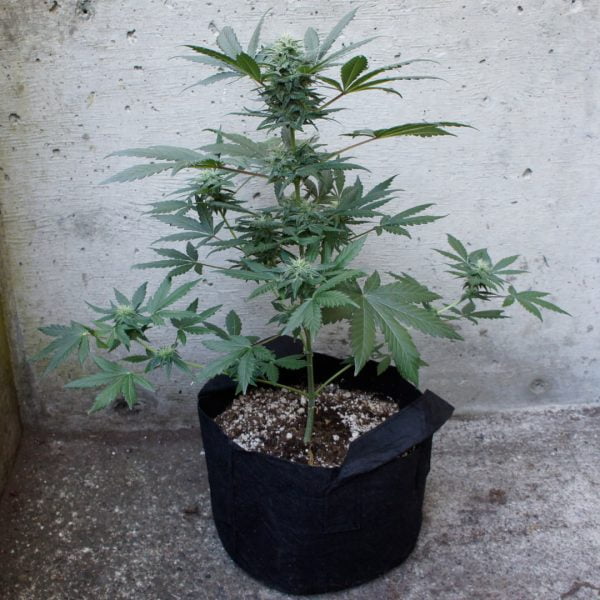
- Choose the right lights. HID and HPS lights emit a lot of heat – way more than LEDs.
Using either HIDs or HPS lights can save you a fair amount of money since you won’t have to run the actual heat as much.
As an added bonus, these hotter lights should help combat humidity.
- Build a greenhouse. If you plan on growing cannabis long-term and can’t (or don’t want to) grow in your house, a greenhouse might be a good investment. It can be costly to get everything set up, but once your greenhouse is up and running you’ll be able to save some money on heat and light by harnessing the sunlight year-round.
A good greenhouse gets you all the perks of growing inside without sacrificing natural sunlight.
Most cannabis is used to growing around the equator, but the plant has spread all over the world.
Even if you’re living in a cold climate, you can still grow a healthy cannabis plant – just make sure you choose an autoflowering strain or an Indica strain if you’re planning to grow outside, and pay careful attention to your start date to avoid the cold on either end of the warm season.
Happy growing!
If you want to learn even more about growing good cannabis, we offer a free 40+ page guide full of images.
Now available on Amazon.
Sign up for our newsletter and download the digital copy today!
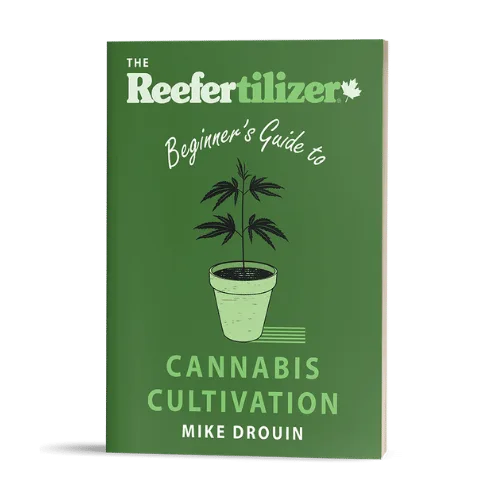
This guide will answer many questions about growing cannabis, like the following...
Selecting Seeds
Identify and Correct Problems
Maximize Yield
Much More...
Get a Chance to INSTANTLY WIN a Reefertilizer Nutrient Kit When You Sign Up.
Elijah Petty is a writer in the cannabis industry. He aims to use his platform to help educate people about cannabis and dispel some of the myths and misinformation that surround the plant.
